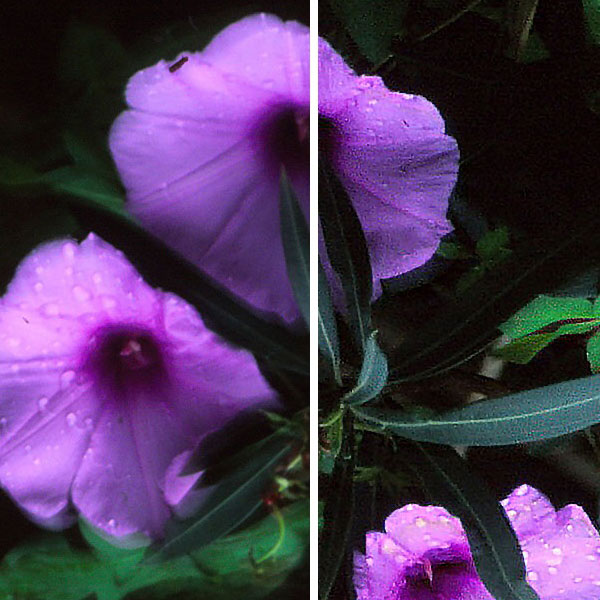Photoshop, Lightroom get Creative Cloud-only updates; Photoshop Mix gets some Android love
posted Monday, June 15, 2015 at 11:00 PM EST

A couple of months ago, Adobe updated its photographer-friendly Photoshop Lightroom image editing app with new features including support for multi-shot panoramas and high dynamic range imagery. Today, it follows up with another Creative Cloud update that sees not just Lightroom, but also Photoshop and Photoshop Mix gaining new features.
It's the Lightroom update that's likely to draw the most excitement thanks to its brand-new dehaze tool, the final version of a feature that was first demonstrated a few weeks ago. If you purchased the standalone, perpetually-licensed version of Lightroom, though, we'd suggest averting your eyes. The reason? Just as the company did with the new features introduced in the last Lightroom CC update, Adobe has chosen not to provide the dehaze tool to customers who don't pay for an ongoing subscription to Lightroom -- at least, until the next major release, if and when that arrives.
Be that as it may, the global Dehaze tool looks to be very useful indeed, making light work of correcting for haze, smog, mist or fog in your photos. (Or if you prefer, intentionally introducing that low-contrast, washed-out look into a scene that was perfectly crisp and clear when shot.) Adobe's Dehaze isn't by any means unique -- rival DxO Labs has had a similar tool called ClearView in its competing Optics Pro 10 product for almost eight months now -- but there's no question that both companies' tools answers an important, real-world photographic bugbear.
Dehaze isn't the only new tool in Adobe Lightroom CC 2015, either. There are also new sliders controlling black and white levels for the graduated filter, radial filter and adjustment brush, and Adobe has improved the import process for customers looking to transfer photos from Adobe Photoshop Elements to Lightroom. More information will now make the cut as it's imported, with Lightroom able to retain photo ratings and people tags that were created in Elements.
Lightroom Mobile, which was the very first feature to be introduced exclusively for Creative Cloud subscribers, has also seen some improvements, at least in its iOS incarnation. There are now tools for adusting vignettes, controlling colors and tone curves, and adding, viewing, sharing or syncing videos on the Apple iPad and iPhone in Lightroom Mobile, making the app even more useful than in the past. No word on if and when these features will make it into the Android version of the app, however.

Moving on to Adobe Photoshop CC 2015, it too will be receiving the Dehaze tool courtesy of the update to Camera Raw 9.1. Adobe has also tweaked its Blur Gallery tools to allow the introduction of monochromatic or color noise after the blur has been applied, so as to avoid an unnatural-looking image that's noisy only in the areas that haven't been blurred. And the Content-Aware Move and Extend tools have received the ability to scale and rotate the object you're moving before you place it.
If you're a panorama fan, you'll appreciate the new ability to use Content-Aware Fill to automatically fill in missing content around the edges of your stitched panos courtesy of a single click on a checkbox. And if your graphics card or chipset is supported by Adobe's Mercury Graphics Engine, you'll also find that the Healing Brush, Spot Healing Brush and Patch tools are now accelerated, showing you their final result in real time. Those changes mean you don't have to wait for the final result to be rendered once you let go of the mouse button, and makes these tools much more intuitive to use for smaller, repeated application.

And while Android users don't yet get the improvements in Lightroom Mobile that we mentioned previously, they aren't entirely forgotten this time around. A year almost to the day after Adobe Photoshop Mix first made its debut on the iPad -- an iPhone version arrived a few months later -- there is finally an Android equivalent. This interesting tool is the first Creative Cloud app that's using the cloud in its traditional sense. It lets you work on Photoshop documents (including their layers and masks), and use tools like Content Aware Fill on mobile devices whose relatively lower-powered processors wouldn't otherwise be up to the task.
Photoshop Mix also receives some updates on Apple's iOS platform. iPhone users can now use the Auto Crop tool that was introduced for iPad users some time back, and they also have a brand-new Shake Reduction tool that aims to fix blurry, shake-laden images using software deconvolution. Results from this tool look to be pretty impressive in Adobe's sample images, although some fairly significant artifacts can remain after the process is completed.

All things considered, there are definitely some pretty worthwhile updates here, even if there's nothing with the "Wow!" factor of some past feature debuts like Content-Aware Fill. And we're still not done, because Adobe has also added a new tool called Stock. It's pretty much what it sounds like, a tool for stock photography that's the result of Adobe's US$800 million acquisition of Fotolia late last year. This could, perhaps, be the biggest news of all.
As Adobe itself noted in press briefings prior to the Creative Cloud 2015 launch, a huge number of creatives use Adobe's tools in their work, and by placing its own stock photo library right at their fingertips, Adobe (and those providing its content) stand to sell rights to a whole lot of imagery. An idea of just how big a deal this could be can be found in Adobe's suggestion that, according to its research, a whopping 85% of creatives buying stock photos also use Adobe tools. (Want to get your photos into Adobe Stock's library? You'll find more details on the Adobe Stock contribution page.)

Available immediately, a subscription to the complete Adobe Creative Cloud 2015 suite costs US$75/month or US$600/year. Individual apps can be subscribed to for US$25-30/month or US$180-240/year. By far the best deal, though -- so long as you don't need any other Creative Cloud apps, that is -- can be found with the Creative Cloud Photography Plan, which costs US$120/year. (No month-to-month subscription is available on this plan.)
More details can be found on Adobe's website.
